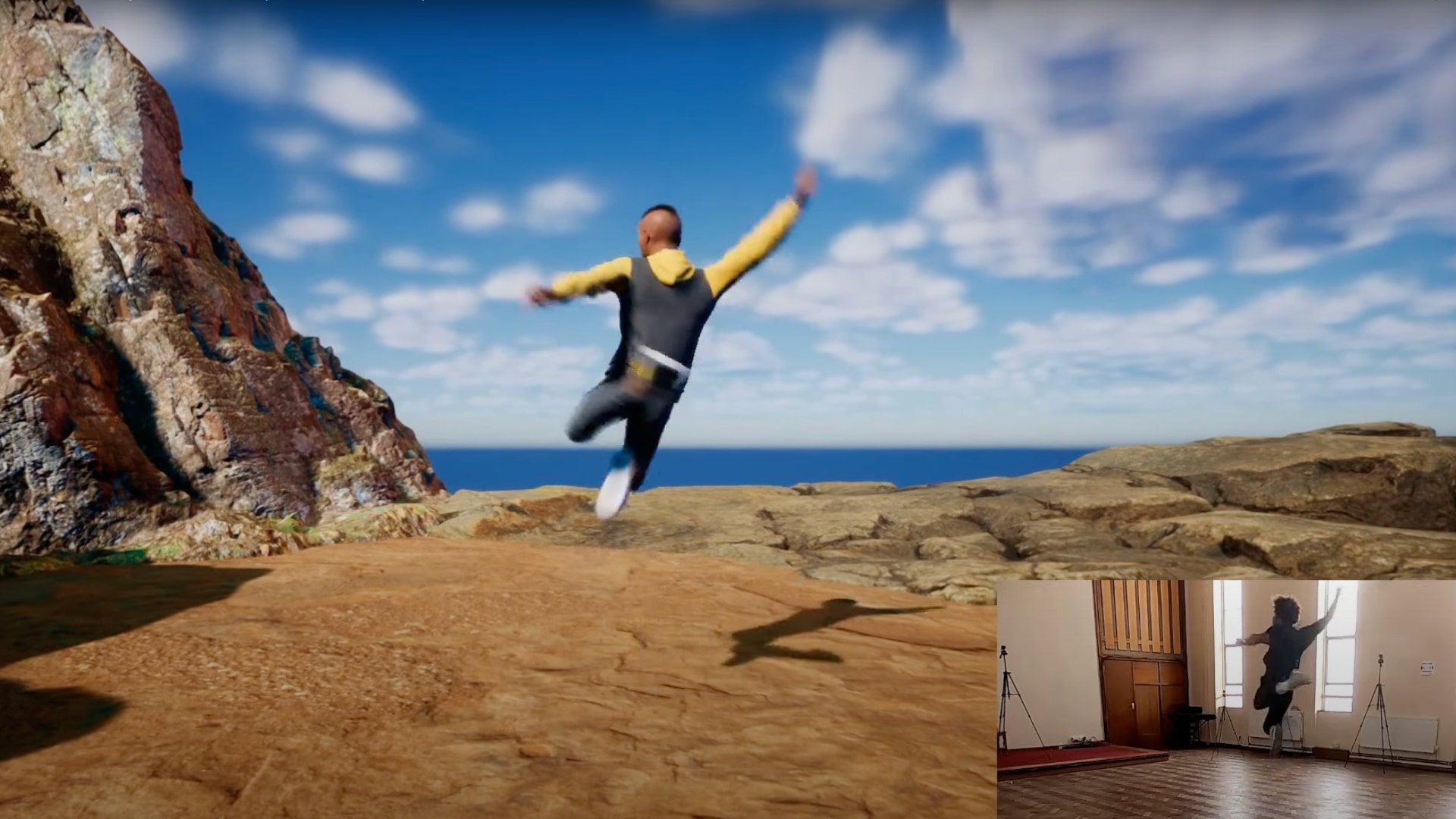
Move.ai is an interesting new markerless motion capture technology that is being released next month. Here’s a short preview, alongside a quick glimpse into how it’s being used at Corridor Digital.
Motion capture has come a very long way in the decades since it was first invented, and the next step on its way to being able to run on consumer level equipment is exemplified by move.ai which uses arrays of iPhones or GoPros for markerless motion capture. Not just brand new, top of the range models either, but anything down to an iPhone 8 or a GoPro HERO8. Stick them on some tripods, point them at your subject, boot up the app, and off you go.
The company reckons that using an array of six phones will give you optical-grade motion capture of a 6m x 6m volume with up to three people in the scene. The data can then be output into Unreal, Unity, Omniverse….pretty much anywhere you want to send it actually. It’s not a realtime process, the data is processed in the cloud before you can view it, but it is a cost-effective one; the company reckons you can have a set-up rigged in under seven minutes and when the service launches next month it’s going to be priced at $365 for 12 month’s access.
This is the sort of thing it can do.
Beta feedback
Behind all this is a patented combination of AI, computer vision and machine learning software, which is just what you need to capture high fidelity motion without any suits or markers. And feedback from the beta tests so far is positive.
Corridor Digital is a case in point. The company is a leading independent virtual production studio probably best known for viral, action-filled short-form online videos series such as Rush and Lifeline. Having used markerless capture originally in the days of the Kinect, it started to examine the market to see what other technology was available.
Niko Pueringer, Corridor Digital Co-founder, says: “We discovered Move.ai on Discord, and from its YouTube community. Its ability to produce high quality motion capture data using markerless tech, simply using iPhones or GoPros, immediately captured our attention.
“From our initial research, we decided this was an avenue to explore. The clinching factor was its simplistic workflow, enabling us to achieve our goal of speeding up our creative process. Being able to discuss an idea and instantly try it out using only a few team members, to see if it’s worth progressing, is invaluable.”
To date, Corridor Digital has used Move.ai’s tech in beta testing, and is using a variety of equipment to explore its full range of capabilities. The test setups have been wide ranging, from multiple pieces of equipment such as a green screen painted white, iPhones, and an iPad, to a multiple-camera setup, and a simple two-phone test, specifically concentrating on capturing hand movement.
Corridor Digital also tested the tech using different numbers of team members, and was able to capture footage with only two people. The team also discovered that while Move.ai’s tech isn’t real-time, after the initial calibration period was done being able to process shots in parallel kept the pace of output on par with a normal day of production using motion capture suits. Another critical feature is the real-world placement and interaction with the ground and surroundings as having accurate world-space placement for mocap unlocks a lot of interesting movement possibilities.
Apart from the lower costs involved due to its use of iPhones and GoPros, Corridor reports two other winning attributes: flexibility around shooting location and the amount of physical space captured, and its ability to ‘pick up and shoot’.
“In time, once we’ve fully realised the potential of markerless motion capture on our smaller productions and the tech itself has become more robust, we can begin designing full narratives around this workflow,” says Pueringer. “Move.ai’s tech is not only fast, low budget, and fun, but it also perfectly demonstrates the future of motion capture. We’re excited to see how it advances and improves as we use it!”


Comments